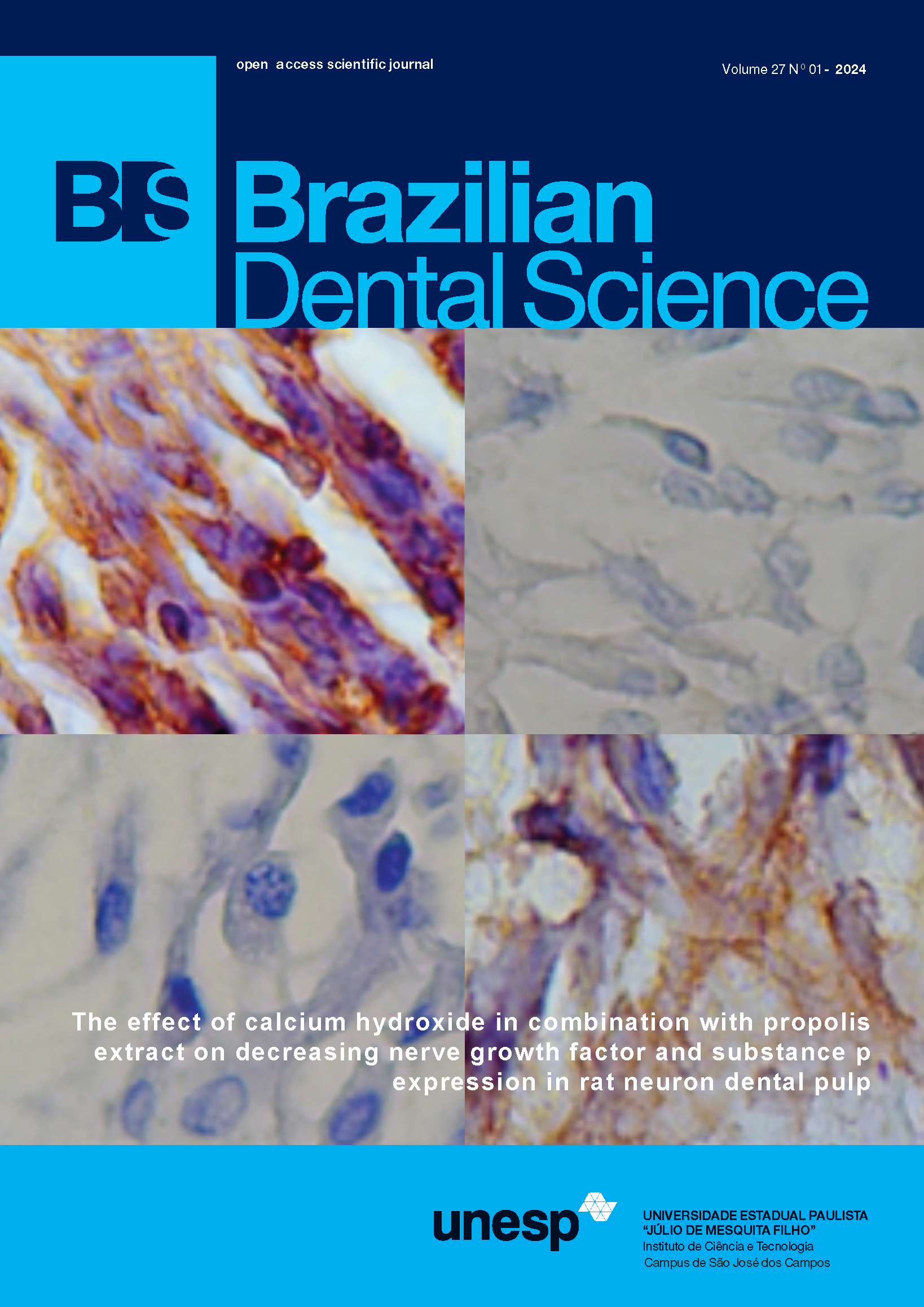Molecular detection of IL-10 level to determine severity of periodontitis in type 2 Diabetes Mellitus patients
DOI:
https://doi.org/10.4322/bds.2024.e3960Abstract
Objective: The prevalence of periodontal disease is increasing in most countries including developing and developed countries. It affects 20-50-% of the global population. Patients with type 2 Diabetes Mellitus (DM) with severe periodontal disease had a 3.2 times higher risk of death than individuals without periodontitis. Periodontitis contributes to small-scale systemic inflammation. The objective of this study was to determine the severity of periodontitis using IL-10 (Interleukin-10) level in type 2 diabetes mellitus. Materials and Methods: This study was cross-sectional. All methods were performed following the guidelines and regulations of the Ethics Committee, Faculty of Dental Medicine, Universitas Airlangga. The samples were 90 subjects. The instruments used were questionnaires, periodontal status measurements based on Community Periodontal Index (CPI), and random blood glucose measurements. Data on the IL-10 level was obtained using Gingival Crevicular Fluid (GCF). Results: There was a significant difference in lifestyle in each group. The highest IL-10 level was found in the periodontitis group, followed by the periodontitis with the type 2 DM group. Conclusion: The level of IL-10 can be used to determine periodontitis severity in type 2 DM. Most respondents with the highest level of IL-10 were found in periodontitis followed by periodontitis with type 2 DM group. High levels of IL-10 will decrease the synthesis of Tumor Necrosis Factor Alpha (TNF-alpha), Interleukin-1 (IL-1), Interleukin-6 (IL-6), activation of macrophages, and Polymorphonuclear neutrophil (PMN).
KEYWORDS
IL-10; Periodontitis; Diabetes Mellitus; Medicine; Health risk.
Downloads
Published
How to Cite
Issue
Section
License
Brazilian Dental Science uses the Creative Commons (CC-BY 4.0) license, thus preserving the integrity of articles in an open access environment. The journal allows the author to retain publishing rights without restrictions.
=================




























